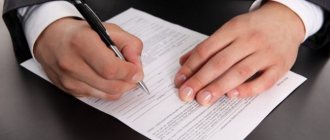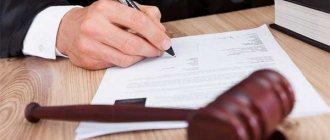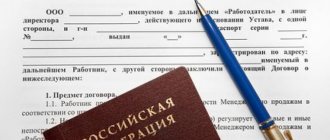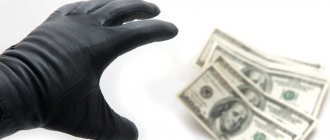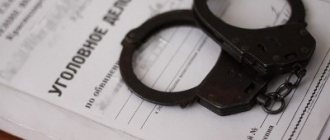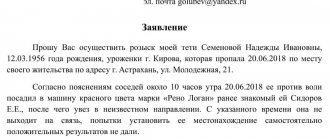Forgery of a signature is known to everyone since childhood. Everyone begins to engage in illegal activities from school. When the diary contains an unsatisfactory grade and a parent's signature is required, many people put their signature instead of mom or dad. If children's pranks do not lead to serious consequences, then forging signatures on documents by legally capable persons can lead to criminal liability.
There are times when circumstances require signing for someone. But this will not have serious legal consequences. For example, a retired grandmother asked you to pay for her utilities at the bank cash desk. Grandma should have signed the receipt herself, but you did it instead. The cashier accepted the payment, gave change and printed a receipt. You helped your neighbor pay off her utility debt.
In some cases, often involving large sums of money or property, a graphological examination is even required to check for signature forgery. The standard signature can be considered the one that is in your passport.
Everyone remembers the moment when you wrote it out in ink so as not to smear it. Over the years, the stroke of a pen can change a little. The signature may bear little resemblance to the one on the passport.
Meanwhile, the signature plays a special role, and quite a practical one. Sometimes, without resorting to the use of stamps and seals, using a signature you can confirm the authenticity of a signed agreement or other document, for example, a receipt or order. As in the old days, signatures are often forged. It can sometimes be difficult to expose such signatories, but enterprise managers resort to a little trick: to sign important documents and orders for the enterprise, one manager thought of making a signature with a monogram. And he began to sign financial documents almost in block letters with transcripts. The employee who tried to forge the document did not know about it, and was caught red-handed. This is just one option, a relatively harmless imitation of someone else's signature. It’s good that all this can only end with a reprimand and a verbal warning. If the signature is affixed for selfish reasons, then the legal assessment will be somewhat different. Malicious intent serves as an aggravation in the case, and liability is determined by the Criminal Code of the Russian Federation.
The Criminal Code of the Russian Federation describes various cases of criminal liability for signature forgery. Responsibility arises in case of falsification of election documents, referendums and national voting. If someone falsifies prescriptions that give the right to purchase psychotropic or narcotic drugs, he will also be held criminally liable. The article covers forgery and circulation of documents relating to state awards, stamps or forms. Forgery of a signature is not an end in itself; it is considered part of a crime and, in particular, fraud, which was made possible thanks to well-fabricated signatures. Punishment for each case of signature forgery is considered individually.
All aggravating circumstances are taken into account. It turns out that the measure of responsibility is assigned depending on the purposes for which the documents were falsified.
general description
To qualify the crime as signature forgery, the attacker’s actions must meet two conditions:
- The forged signature must be on an official document;
- This document must be transferred to a third party.
In addition to the fake signature itself, this crime will include:
- Use of false documents;
- Their production using special technology;
- Making corrections and additions to documents;
- Erasing some of their information;
- Use of false seals and stamps.
The law allows you to change document forms only by hand. It is not punishable under Article 327 to change those documents that do not provide any rights, benefits or advantages. Also, counterfeiting awards from other countries is not punishable.
From the legislative side
The Criminal Code of the Russian Federation has many articles that establish liability for forging signatures on various types of documents. Based on the legislative framework, a person may be convicted:
- for falsifying documentation participating in elections;
- for deception for official purposes;
- for illegal provision (that is, in fact, sale to a foreign person) of a passport of a citizen of the Russian Federation;
- for fictitious registration of a foreign citizen with state registration;
- for the sale or purchase of various types of business papers;
- for falsifying official papers and documentation.
There is criminal liability for forging a signature
Important! The violations of the law mentioned above suggest that the accused participated in forging signatures belonging to other citizens (often we are talking about forging seals and stamps, registration forms). What punishment the offender will suffer will be determined in court, taking into account the gravity of the crime. You need to understand that before a citizen accepts the status of a criminal, his involvement in the crime will need to be convincingly proven.
For this purpose, law enforcement agencies involve special expert analyzes in the investigation. The document that is provided to experts for examination already acquires the character of material evidence. In another way, for judicial representatives the legal force of a document no longer matters if we are talking about a forgery.
Let's figure out exactly how experts recognize forged signatures. In how many ways is it possible to counterfeit a security? What is the difference between forged documentation and forged documentation and how does it affect the punishment imposed by the judiciary on the accused? We will look into all the details in this article.
If you forge a signature, you can be punished under various articles of the Criminal Code of the Russian Federation - it all depends on the details of the crime
What documents are considered official?
To understand the crime of signature forgery, it is important to separate the official document from the unofficial one. In the narrow sense of this concept, only those documents issued by government agencies are considered official. But more often this concept is defined more broadly and official documents also include those issued by commercial and private organizations.
In addition, they must influence legal relations and certify legal acts (this is called the substantive feature of an official document).
General signs that indicate a complete forgery of a document for both methods:
§ the dimensions of the passport form are not maintained in comparison with the original, valid sample;
§ the use of different materials for the manufacture of the passport cover, which do not correspond to the description of the passport, as well as the use of paper for the manufacture of the inner pages of the passport of poor quality (lack of watermarks); § insufficient clarity of small details of drawings and text; § changing the overall dimensions of the printing plate due to non-compliance with the scale; § absence of luminescence when examining a document under UVR (hereinafter referred to as ultraviolet radiation). Particular signs of counterfeit documents that were produced by printing:
§ difference in types of seals; § non-coincidence in the graphics of individual elements of document design, in the transmission of tone gradations of a black-and-white tone image and in color rendition; § errors in the text and its location; § difference in font, paint; § defects in printed elements; § change in the absolute and relative width of strokes compared to the strokes of the original sample; § distortion of the pattern of printed elements of letters in the process of making an impression of a metal form.
Corpus delicti
The production and use of false documents are interrelated actions, since without the production of such forgeries they cannot be used.
Signs
To qualify a crime such as signature forgery, it is necessary to have guilt and legal characteristics. They are defined in three parts of Article 327 of the Criminal Code:
- Forgery of a document makes it possible to obtain benefits;
- If there are additional violations, the punishment will be harsher;
- Using a false document is also punishable.
But in each specific case, additional circumstances are taken into account to qualify the crime. They influence the severity of the crime and the severity of the punishment.
Subject and object of signature forgery
The third part of Article 327 defines the subject as a sane person at least 16 years of age. The object is a violation of legal norms established by the state.
Objective side
This concept includes the process of using fake documents.
The objective side is formed by:
- Forgery of official papers;
- Production of state awards, seals and forms;
- Selling them.
Also, this crime will include illegal modification of this document.
Subjective side
The presence of criminal intent is the main characteristic of the subjective side. A person forges a signature or an entire document and sells or transfers it to another person, knowing that in doing so he is breaking the law.
Why do you even need a signature?
A person’s personal signature is an object of his intellectual property . It is confirmation that a specific person, whose surname and initials appear next to the signature, actually signs this or that document.
This is like a guarantee that no one can lay claim to the rights of another person. The signature must be resistant to forgery; it must contain at least one letter from the person’s first or last name.
The person who owns the signature must reproduce it correctly himself, as well as write it quickly. However, today many scammers forge signatures. Why do they need this?
Qualification Features
The second part of Article 327 of the Criminal Code defines punishment for forging signatures and documents in order to conceal another crime. But it is clarified that this act cannot be qualified as official forgery if the person who committed the forgery did not hold the corresponding position.
Difference from related compounds
Today, in legislation, official forgery is separated from other types of document forgery. It is characterized by the presence of an official subject of violations.
At the same time, it is necessary to clearly separate Article 327 from Article 142. The first determines punishment for violations in administrative procedures, and the second - for violation of the electoral rights of citizens and forgery associated with their expression of will.
Methods of forging documents. Main signs of document forgery (complete forgery)
Documents submitted by the Client in order to obtain a loan fraudulently may contain a number of forgeries that can be detected without special skills and special equipment.
Types of document forgery.
When falsifying documents, a distinction is made between intellectual and material forgery:
Intellectual forgery
.
In case of intellectual forgery, the document, although produced in compliance with the requirements listed above, contains erroneous information. For example, preparing a document on behalf of a non-existent organization, issuing a certificate or diploma of graduation from an educational institution in the name of a person who has not undergone appropriate training. Material fake.
In material forgery, a document either completely imitates the real one and is produced by the attacker in full (complete forgery), or partial changes are made to the content of a valid document (partial forgery).
In fact, a document that is relatively simple in printing has many properties and features, the absolute reproduction of which is impossible when counterfeited. It follows that an absolutely accurate forgery of a document is impossible, and even with a high quality of forgery, a detailed analysis makes it possible to identify deviations from the original in the document that are sufficient to establish the fact of the forgery itself.
Types of fakes
The legislation defines two types of counterfeits - manual and technical. Both types fall under Article 327 of the Criminal Code of the Russian Federation.
Manual signature falsification
The easiest and most common way to forge a signature is manually. To determine such falsification, a visual assessment is usually sufficient. Sometimes it is necessary to conduct a handwriting examination.
Technical forgery of signature
To use the technical method of counterfeiting, it is necessary to use special equipment.
The most common types of counterfeits using special methods:
- Redrawing the signature in pencil with additional outlining with colored ink. In this case, the fake can be easily identified by the pencil marks left at the signature site;
- Forging a signature against the light or using special paper;
- Use of copying media - photographic paper, emulsion, films, etc.;
- Forgery using an electrographic apparatus. Such falsification is determined by the special shine of the ink, the absence of signature relief and peeling of the ink;
- Using an inkjet or laser printer. With such a fake, the signature also has no relief, but there are small drops of toner, by which the falsification can be easily identified;
- Application of facsimile technology. This is the highest quality fake of those listed above, but it can also be identified by the absence of grooves in the place of the signature.
In general, technical forgery differs from manual forgery by copying the signature from the original.
What to do if you are accused of forging a signature?
Is your teacher accusing you of forging his signature on a record book? A co-worker insists that you forged his signature on a payroll slip? How to prove your innocence of forging a signature on a document?
To do this, you need to order a handwriting examination at the Forensic Examination Center. The examination is carried out as follows:
- the specialist compares the signature of the person whose handwriting was falsified with the signature on the document;
- then he asks the person who owns the signature to write a handwritten text on paper, where he will have to indicate the full last name, first name, patronymic, and also sign.
Based on these studies, the specialist gives his written assessment of the results of the examination.
If it was not you who forged the signature, but it was actually put down by the person whose initials were listed next to the signature, then the results will say that the signature on the document is identical to the one on the passport or on the experimental sheet, which means that the document is not fake.
Signs of signature forgery
To identify a fake signature, it is not always necessary to conduct a special examination. Usually it is enough to evaluate a number of common signs of a fake:
Have a question for a lawyer? Ask now, call and get a free consultation from leading lawyers in your city. We will answer your questions quickly and try to help with your specific case.
Telephone in Moscow and the Moscow region: +7
Phone in St. Petersburg and Leningrad region: +7
Free hotline throughout Russia: 8 (800) 301-39-20
- Traces of preparation, sharp rounded strokes and the absence of paired lines;
- The presence of thickenings that look unnatural, as well as blunt ends of lines and excessive tortuosity;
- Traces of pigment and poor alignment of lines are very easy to detect with a magnifying glass and good lighting;
- Uneven toning, lack of relief and emulsion particles indicate a fake using special paper.
In the case where the forgery is committed by beginners, it is immediately visible without additional assessment. Such signature forgeries include many of the above characteristics.
3.1. The concept of a signature and methods of technical forgery
One of the document details
defining its legal
force, is handwritten under
letter of an individual.
In forensic handwriting science, the following definition of a signature is given: a signature is a type of manuscript that has an identification purpose and reflects the surname (sometimes first name, patronymic) of a person in the form of letters, conventional written signs and letterless strokes.
Due to the importance of the signature as one of the main details of a document, it is often forged, usually by resorting to technical techniques and means to achieve greater resemblance to the original signature.
Thus, the essence of technical forgery of signatures lies in mechanical copying (and not in handwriting, by imitation from memory, or by drawing by eye) of the original signature.
The task of TKED is to establish the fact of technical forgery of a signature and the method of its execution.
Based on the above, we can define technical forgery of a signature - this is the execution of a signature on behalf of another person using various devices and technical techniques that make it possible to achieve significant similarity with the original signature.
The description of a signature in TKED is carried out by analogy with handwriting examination and is due to the fact that, in accordance with the methodology of handwriting examination, any signature must first be examined for the presence or absence of signs of its technical forgery, regardless of whether this question was raised before the expert or not.
The structure of the signature is divided into the following parts: initial, middle and final. The initial part of the signature is usually made in the form of a monogram or simply capital letters.
Using a knowingly forged document
The article on forgery of documents states that not only the fact of forgery, but also the use of a false document is punishable by the Criminal Code. In this case, the third part of Article 327 comes into force. Among the punishments:
- Fine up to 80 thousand rubles or deprivation of wages for six months;
- Mandatory work up to 480 hours;
- Correctional labor for up to 2 years;
- Arrest up to 6 months.
The penalty is determined depending on the severity of the consequences of using a forged document.
Statute of limitations for the crime
If an attacker forged a signature, which resulted in a crime of mild severity, and this was not noticed for 2 years, due to the expiration of the statute of limitations, he cannot be prosecuted under the articles of the Criminal Code. If the forged signature constitutes a crime of high gravity, then 6 years must pass for the statute of limitations to expire.
A forged signature discovered after 6 years cannot be a reason for liability for its forgery.
However, you should not rejoice at those who forge signatures on documents. If the forgery entailed related crimes that led to negative consequences, and which have a different statute of limitations, he can answer for them to the fullest extent of the law.
Responsibility
Like other articles of the Criminal Code of the Russian Federation, Article 327 provides for a gradation of punishment depending on the severity of the crime. In this case, the damage caused by the violator of the law is taken into account.
Features of bringing to responsibility
The main evidence of forgery of a signature or document is the document itself. It is necessary to conduct an examination and establish the fact of an offense.
But there are a number of features:
- Often, signature falsification occurs at work and does not pursue selfish goals. This is a situation when you need to submit a document, but the boss authorized to sign it is not there. In order to eliminate legal consequences for such forgery, you must have written permission from your boss to sign the document for him. Without such permission, the employee’s actions may be defined as abuse of authority and he may be fired;
- Another option is that the boss forged the signature on the salary slip in order not to pay the employee’s salary. For this you must immediately go to court;
- Forgery of signatures in sales contracts. The consequence of such actions will be the cancellation of the contract and the bringing of the forger to criminal liability;
- Today, the legislation has elevated the minutes of the general meeting to the category of official documents. Forging a signature on this document is also punishable. But in a situation of many signatories, it is quite difficult to find the culprit of forgery;
- Fake acceptance certificates of objects are also punished, as they lead to financial damage to contractors;
- Any other forgery of signatures in documents. The court determines the severity of the crime by its consequences and sets the punishment.
Forgery of a signature in court is punishable separately, since this crime, in addition to Article 327, also violates Article 303.
If any falsification is discovered, a claim must be filed in court. During the consideration of the case, the circumstances and intent of the person who committed the forgery will be established.
When is it criminalized for signature falsification in 2022?
A person who intentionally imitated someone else's signature bears criminal penalties in the following cases:
- if in court it is established that he falsified the signature with his evil intentions, he was interested in having his “fake” signature on the document;
- if the signature makes his life easier: it removes him from some responsibilities or, conversely, gives him rights.
If a person did not have any evil intentions and he falsified the signature, but the content of the document remained unchanged, and such a person did not seek any benefits for himself, then he will not be prosecuted.
If a person deliberately changed some data in a document, signed an autograph for another person, then if a falsified document is discovered, he can be punished if it is proven that the document was “fake” and the signature does not belong to the person whose name appears on the document .
Amnesty
For violations of this type of law, an amnesty is applied. But only:
- Veterans of WWII and other military operations;
- Workers of the Mayak facility who were exposed to radiation during the Chernobyl accident;
- Holders of state awards;
- Pregnant women;
- Children under 14 years of age;
- Pensioners;
- Disabled people of the first and second groups.
For women and minors, the rule is that they must be released from prison if they have served a year under Article 327.
How do inspectors recognize a fake “primary” document and what are the consequences?
If inspectors discover a fake in a signature or seal, not only the one who made it may suffer. But also, for example, a counterparty who uses a fake document without even knowing that it is fake. It is quite difficult to prove your ignorance in court. Typically, regulatory authorities and courts reason like this: whoever benefits from counterfeiting is also to blame. As a result, even a bona fide organization that recognized expenses and VAT deductions on the basis of “drawn” papers becomes guilty of using forged documents.
What does a company face if a counterfeit is detected?
Let us immediately note that fake documents include both completely false documents and genuine documents in which changes have been made that distort their content. The consequences of identifying forged documents can be completely different.
If during a tax audit it turns out that documents were signed by unauthorized persons, inspectors for such transactions will simply refuse VAT deductions and recognition of expenses in tax accounting. They say that according to Article 252 of the Tax Code of the Russian Federation, expenses must be documented, which is not the case in this case. Of course, this will require expertise, however, the consequences will only affect the adjustment of the tax base. This is exactly what happened in the situations considered in the decisions of the federal arbitration courts of the Northwestern district dated 02.11.08 No. A42-9396/2005, Volga-Vyatka district dated 08.31.07 No. A11-11747/2006-K2-25/714 districts.
There are often cases when inspectors identify a fake by eye, without bothering to invite experts. The courts do not accept such “evidence” (resolution of the Federal Arbitration Court of the North-Western District dated August 27, 2007 No. A56-21343/2006). In this case, the court, on its own initiative, has the right to order an examination (clause 1 of Article 82 of the Arbitration Procedure Code).
Another thing is the employees of the Russian Ministry of Internal Affairs. If, with the help of a forged document, rights to someone else’s property or other benefits, including from the state, are acquired, then the guilty person may be brought to criminal liability (see page 74). Of course, this requires proof of direct intent.
According to experts, one way or another, any fake can be identified. It always leaves traces: witnesses who forged or knew about it, specific traces of printers, records, even the fact of telephone conversations. These traces can be found, and then an examination may not be required - the words of witnesses will be enough. This, for example, happened in one criminal case, in which, either through negligence or out of naivety, the company itself ordered the production of counterparty seals, which was confirmed by an agreement with the manufacturer and an extract from the current account about payment for the work performed.
Forging a signature is more risky than forging a seal
It should be noted that forging a signature can have more serious consequences. This is due to the fact that the will of a legal entity to draw up any document is confirmed by the signature of the person who has the right to act on behalf of the organization without a power of attorney. In this case, the seal only certifies the signature, that is, it confirms that the person signed not on his own behalf, but on behalf of the organization.
Judicial practice proceeds from the fact that with a genuine signature and a forged seal, a document can be valid, but with a forged signature, it will be forged, regardless of the authenticity of the seal. Thus, the Federal Arbitration Court of the Ural District did not take into account the argument of the tax inspectorate that the seal imprint on the deed of prima transfer was made using a printer (resolution dated July 27, 2005 No. F09-3146/05-S7). In another dispute, the judges also disagreed with the inspection and pointed out that corrections on the organization’s seal in waybills do not affect the actual indicators (resolution of the Federal Arbitration Court of the North-Western District dated 06/08/06 No. A52-5725/2005/2).
How to determine in practice that a signature is forged
The most obvious sign is the absolute dissimilarity with the signatures on earlier documents. Inspectors will simply compare documents for different periods. Handwriting, of course, can change, but not quickly or dramatically.
On the other hand, receiving two documents with exactly the same signatures will lead inspectors to think about forgery. Even if a person signed documents one after another, the difference can be seen. You can immediately mark the printed signature. It will not be pressed into the paper, and this is sure to happen even with the most gentle pressure with a ballpoint pen.
Tax authorities will be suspicious of a signature that is completely covered by a seal. This does not mean that it is forged, because there may simply be little space on the document, but there will be doubts. The same applies to very short signatures and signatures that obviously do not contain the letters of the first and last name. A short signature is difficult to identify, although this has an advantage - with a genuine seal, opponents will not be able to prove that it is forged, even if this is the case. Experts simply will not be able to draw a confident conclusion.
When signing, a person almost always writes quickly and confidently. A fake signature, as a rule, is crumpled up. This happens because the signer tries to repeat the letters and misses small details hidden behind external, catchy signs.
There are nuances that can be revealed during examination. When conducting a full study, experts will take into account smaller differences. For example, when signing with a ballpoint pen, marks may remain on the paper indicating that the pen was tilted to the right or left. This will indicate which hand - left or right - the signature was made. After all, when counterfeiting, this nuance may simply not be taken into account.
Experts will also take into account other factors, such as the position of the sheet of paper in front of the signer, the distance from the edge or text, the height interval, the distance between elements, the slope of elements, the pressure on the paper, etc. After all, to perfectly forge a person’s signature, it is not enough to learn handwriting, you need to become this person for a while - adopt manners, habits, gestures, posture, and this is almost impossible. This is why the experts get the job done, except for very short signatures.
To be completely sure that he is right, the expert not only studies samples of documents, but also the circumstances of signing. According to experts, the signatures of the same person placed on a document before, during or after, say, a buffet table, can be very different. But, for example, a printed signature has no differences.
Experts can also determine the “age” of the signature on a document. The most accurate way to determine when the signature was made with a ballpoint pen. The accuracy limit of its examination is two years, after which the composition of the ink stops changing. If the document came for examination within a week after the forgery, then it is possible to determine the day when the inscription was made, if within months - an approximate month. Determining the period for signing a document with a gel pen is much more difficult. This is due to the fact that it “dries out” faster. Fountain pen inscriptions are not subject to age testing if they are made with water-based ink.
What will indicate that the seal is forged or was applied to a blank sheet
As for stamp forgery, tax officials may suspect a forgery if they find spelling errors in the text of the stamp or differences in size on different documents. For example, a scanned print will often differ in size from the actual print because the original size may not be retained when the print is scanned, processed, and printed. Differences occur in tenths of a millimeter, but real printing does not allow even this error. If you put two documents on top of each other and hold them up to the light, the difference is easy to see.
With regard to the forgery of the document itself, suspicions can be raised by such little things as the size of the fields, different line alignment, the use or non-use of automatic word hyphenation, etc. Thus, sometimes a quick glance at the document is enough for the inspector to suspect a forgery. Inspectors may also become suspicious if, during an on-site tax audit, documents, for example “primary documents”, on behalf of the counterparty are not immediately presented for unknown reasons. Quite often it happens that the taxpayer submits documents much later or directly to the court. The likelihood that under such circumstances the tax authorities will turn to a specialist is very high.
During an examination, a printer can reveal forged document forms. For example, in one case, when examined under a microscope, it turned out that the sheets of the contract were printed on different printers: one fake sheet differed in that it contained many more graphite particles on the paper. In another case, on the contrary, it turned out that documents on behalf of different counterparties, submitted for verification by the company, were printed on the same printer. Documents that are indistinguishable at first glance look completely different at 200x magnification.
According to experts, it is generally impossible to determine the age of a document that was printed on a laser printer - this can only be done in the case of inkjet printing. But an expert can, for example, determine whether signatures and seals appeared on a document before or after it was printed. Of course, it happens that managers deliberately leave signed blank sheets of paper or letterhead “just in case.” But often this indicates a fake. Special research techniques make it possible to see that the ink on a document is “baked” under the printer’s dye, because the printer’s lamp heats the paper to 100 degrees or more. This will indicate that the signature was applied before the printed text. If the pen ink was applied after the document was printed, then it is visible over the text as if it were fresh.
In the same way, pre-printed lines of documents, postscripts and even seal impressions are recognized. It is easy for an expert to determine whether a stamp was made manually or printed on a color printer. A more thorough investigation is required if the fake stamp is made from an impression of a real seal. In essence, such a print is no different from the original, but it’s all about the smallest details that will not match. The fact is that when a stamp is made from an impression, it absorbs particles of dirt, dust, etc., which the manufacturer can copy along with the stamp impression. As a result, when comparing impressions of real and fake seals under a microscope, this will be immediately visible.
How not to suffer due to the fraud of a counterparty
Precautionary measures are quite banal. Firstly, do not hesitate to ask for copies of passports of authorized persons. Especially if fairly large turnover is expected with this counterparty. After all, the passport contains a sample signature of the person to whom it belongs - and other documents can already be compared with this signature.
Secondly, whenever possible, try to conclude transactions in the personal presence of the parties, and not exchange contracts by mail. In addition, in this case, the company will have on hand a reliable sample signature of the counterparty’s authorized person, which can subsequently be compared with other documents.
On what grounds can they be held criminally liable for forgery of documents?
Criminal liability for falsifying documents necessary for calculating taxes is possible under Articles 159 and 327 of the Criminal Code of the Russian Federation. At the same time, Article 159 (fraud) is applied, in particular, in case of illegal reimbursement of VAT from the budget using forged documents, since in this case the guilty person, in fact, deliberately, through deception, acquires the right to someone else’s property. In this case, the maximum possible punishment is imprisonment for up to 10 years with a fine of up to 1 million rubles (clause 4 of Article 159 of the Criminal Code of the Russian Federation). Bringing a person to justice under Article 327 “Forgery, production or sale of counterfeit documents, state awards, stamps, seals, forms” of the Criminal Code of the Russian Federation raises some difficulties. The fact is that under parts one and two of this article one can be held accountable for falsifying an official document. The concept of an “official document” is not defined in the Criminal Code, and the issue remains highly controversial. Therefore, it is not worth excluding the risk of making claims on these points. But for part three of this article, it doesn’t matter at all who forged the document itself - to apply liability measures, the only thing that matters is its use.
How much does the examination cost?
To determine the authenticity of a signature or seal, two types of examination are usually performed: handwriting examination (by whom it was carried out) and technical-forensic examination (how it was carried out). There is no single price for such services. For example, the examination of one signature on a document costs on average about 10–13 thousand rubles. The price of a technical and forensic examination of a document is on average 20–30 percent higher and amounts to about 12–18 thousand rubles per document.
In this case, the final price is set by experts depending on the complexity of the examination. For example, if you need to determine whether a signature was made by a specified person, and also determine the gender of the person who made the signature, then you will have to pay a double price for this - separately for the answer to each of these questions.
Arbitrage practice
Courts often pay attention to precedents in similar cases. And depending on the decisions made on them, a verdict is made on the new case. There are cases of pre-trial resolution of a conflict surrounding the forgery of a signature. In court, they often give a suspended sentence for this offense. But this does not apply to officials and other officials.
Passport forgery
Since a passport is the main document of a citizen of the Russian Federation, forgery is punishable by a maximum penalty under Article 327 of imprisonment for 2 years. This is a dangerous crime for society, especially since fake passports are usually used for other criminal activities.
When registering a car
In case of falsification of registration documents for a car, due to reluctance to deal with their registration or to hide any information, the violator has the opportunity to violate traffic rules with impunity. If the forgery of such documents is detected, punishment will be applied to him in the form of a fine or restriction of freedom.
Falsification of the purchase and sale agreement
Forgery of contracts for the sale of property causes significant damage to the injured party. In fact, this is one of the types of fraud, therefore it is punishable under Article 327.
In what situation will there not be punishment for falsifying documentation?
Currently, judicial practice knows situations where a citizen suspected of falsifying documentation does not commit a criminal act for the purpose of fraud. This may include, for example, an accounting employee of a company imitating the signature of his manager in order to provide reporting to tax officials.
If all the information contained in the legal documentation is genuine (there is no evidence of forgery), and the employee committed an unlawful act only to reduce the time required to process the material, without having selfish motives, then most likely he will not receive punishment under a criminal article. This is due to the fact that in fact there is no injured party. In other words, the crime simply does not exist.
Forgery of a signature is not always punishable by law
When considering a case and making a final decision, the court will take into account many subtleties. The details that form the composition of the criminal act in each specific case will be considered:
- whether the person who committed the unlawful act has privileges related to his position;
- motives of the offender (personal goals, criminal intent, etc.);
- the legal significance of falsified documentation (in other words, does such a document give the person who presented it any rights or release of obligations).
The last item on the list deserves a more detailed analysis. The legislation of the Russian Federation clearly establishes a list of documentation that gives additional rights or exempts them from them. So, the following documents are legally significant:
- documentation from educational institutions (diplomas, certificates, reference material, certificates);
- retirement certificates;
- driver license;
- wills;
- power of attorney;
- patents or other licensing documentation.
An important nuance is whether the falsified document has legal significance
By the way. Facsimile is an exact copy of a document that does not violate anyone’s rights.
An attempt to falsify documents from the above list will be punishable under a criminal article. Once the fact of forgery is confirmed, it will no longer matter whether the attacker managed to put the fake document into action or not. The presence of a falsified document is in itself a reason to start legal proceedings.
In a situation where a forged document has legal significance, but does not give the offender any rights and does not relieve obligations, punishment under the article of the Criminal Code of the Russian Federation will most likely not follow (since there is no corpus delicti).
If there is no corpus delicti, there will be no punishment under the Criminal Code of the Russian Federation
In the everyday life of any person, cases of unintentional forgery of a signature without selfish motives can also occur. Such situations include putting a personal signature on the mail, when, for example, a person with a disability, due to the physical impossibility of affixing a signature with his own hand, asks his relative to do so.
If we look at such situations from the legislative perspective, post office employees cannot give parcels or transfers to third parties. Such actions may be regarded as unlawful and prosecuted by law. But usually no one talks about such criminal acts. All this is due to the lack of corpus delicti, because in the case at the post office there is ultimately no injured party.
Are there any known examples where the repetition of someone else’s manuscripts is not regarded as a forgery? Yes, such cases are not uncommon. The most common example is a facsimile. Let's look at the definition of this term.
Important! A facsimile is a kind of stamp that is affixed to the documentation with the official’s signature already prepared. Such seals are actively used in large companies. The production of facsimiles is permitted only with the written consent of the head of the organization; the stamp is used by employees only in situations strictly established by management.
What does a facsimile of a signature look like?
In practice, this solution makes the organization’s work more convenient and faster. Thanks to a pre-prepared stamp, important documents can be processed without the constant presence of the boss and representatives of management positions. The use of facsimiles prevents the occurrence of cases of illegal use of signatures of authorized persons.
How to prevent forgery of a signature in a contract?
The simplest and most obvious way to avoid the negative consequences of forging a signature and other possible problems when concluding a contract is to involve qualified specialists from a reputable law firm in the case. Their participation minimizes the likelihood of problems arising at any stage of preparation and implementation of the transaction. Whether it is worth spending money on the services of professionals is up to the interested parties to decide. But practice shows that this approach to running a business, dividing property between spouses, or any other similar measures in the vast majority of cases turns out to be the only correct one. Moreover, both from a legal and economic point of view.
Detection of counterfeit
To establish the authenticity of the document, as well as the method in which the signature was forged, a handwriting examination is carried out, consisting of several stages.
Preliminary study of materials - this stage is devoted to studying the ruling of the court or investigator, after which the expert is obliged to find out:
- in what case the examination will be carried out;
- what questions should be addressed during the research;
- whether the submitted documents correspond to the list enshrined in the resolution;
- the presence of the initials of all persons involved in the case.
Detailed research. At this stage, the identification features contained in the signature are analyzed. The question of who produced it is also to be resolved. At this stage, the quantitative and qualitative composition of the signature is determined, namely:
- what parts does it consist of;
- how many letters there are, as well as non-letter strokes;
- is there a stroke?
Types of documents
It is necessary to distinguish between forged documents and counterfeit ones. This is important during a preliminary or judicial investigation, and especially if it is necessary to order an examination.
False documents are those that contain changes that do not correspond to the genuine parts of the document that are supposed to be contained or purported to be contained in the document.
Forged documents are those that directly contain information that does not correspond to reality.
Forgery of an employee's signature on salary slips by the employer
Thank you, trial tomorrow. Just in case, I wrote another petition to oblige the employer to provide these original worksheets, but I’ve read so much about handwriting examinations that they don’t really bother with squiggles of signatures, but if my former employer “persuaded” the prosecutor’s office, what experts mean to him.
Article 327. Forgery, production or sale of counterfeit documents, state awards, stamps, seals, forms of the Criminal Code of the Russian Federation.
Elmzaveta, in addition to applying to a court of general jurisdiction, you can also contact the Investigative Committee at the location of your employer with a statement to initiate a criminal case for non-payment of wages, which is provided for in Part 1 of Art. 145.1 of the Criminal Code of the Russian Federation (non-payment of wages).
In the application, indicate the falsification of the signature. Investigators must figure out who falsified your signature in receiving your salary and for what purpose, and will conduct the necessary examinations. You filed a petition in court to have a handwriting examination carried out. So ask the court to provide documents according to which the employer proves that he paid you everything. Without these documents, how can a trial take place? Demand that the employer provide all the documents on which he made payments to you.1.
Article 19.23. Forgery of documents, stamps, seals or forms, their use, transfer or sale of the Code of Administrative Offenses of the Russian Federation;
Forgery of signatures on documents: liability and punishment
Technological progress is moving forward ever faster. Methods for making counterfeits are also being improved, including forging signatures. And sometimes it is quite difficult for experts and law enforcement agencies to identify falsification and bring the culprit to justice.
Falsification is constantly found in labor documents. If, when hiring an employee, any papers or signatures on them were falsified, the court decides to dismiss such an employee.
The article also provides for a punishment in the form of arrest for 6 months, but since there are no arrest houses in our country now, this measure cannot be imposed. This is due to the fact that the company provides all the documents about the employee’s failure to fulfill official duties. Often these papers are falsified: absenteeism reports signed by the commission; for these absences, punishments were imposed, about which there are orders, etc. When considering a case of forgery of a signature, the following points are taken into account: Usually, forgery is detected when the paper is involved in activities carried out by government agencies. For example, during an inspection or in court proceedings when falsification of evidence is revealed. If the matter concerns an official document, for example, a diploma, pension certificate, etc., then the objective side is completed from the moment the paper is produced with all the details (Part 1 of Article 327 of the Criminal Code of the Russian Federation). It is worth keeping in mind that the use of a facsimile (facsimile signature) by an unauthorized person may become the subject of litigation in court and be interpreted as a forgery of a document.
Falsification of statements
And why, one might ask, such “higher education”? Neither the teachers know the students, nor the students want to learn.
Posting intellectual property objects (photos, videos, literary works, trademarks, etc.) on the woman.ru website is permitted only to persons who have all the necessary rights for such posting.
Are you going to forge a signature in your record book that you briefly saw on your classmates? Well, well, let's fake it. It's funny how you can do it. And how the statement will get into your hands is not entirely clear - in your dean’s office they give out documents to just anyone, take it or leave it? Certificate of registration of mass media EL No. FS77-65950, issued by the Federal Service for Supervision of Communications and Information technologies and mass communications (Roskomnadzor) June 10, 2016. 16+by the way, I faked it. I didn’t have time and took a risk. Half of our group forged the teacher’s signature on the drawing. and I was set on fire. it was very embarrassing. I had to lie straight to my face like yes, that’s his signature. I can come right now and sign the drawing again... I’m still tormented by my honesty
Personal signature of an individual: its meaning, typical examples of forgery
A citizen’s personal autograph is considered his intellectual property.
The signature of an individual is considered as a unique identifier of the signatory. The indication of a signature by a specific person confirms the validity of the paper being signed. If a particular citizen has signed a certain document, this ensures that another person in this case cannot legally act on behalf of the signatory. Thus, the autograph itself must be protected from possible attempts at forgery - for this purpose, symbols from the signer’s last name (first name) are included in it. An important point in document flow is the correct reproduction of one’s own autograph by the citizen-signer. The owner of the signature must quickly display it on any papers, clearly confirming his agreement with their contents.
In document management practice, there are often cases of forgery (imitation) of other people's signatures. Despite the criminal nature of such actions, some people still imitate the personal signatures of other persons. Typical examples of such an offense:
- The management of the management company (MC) imitated the signatures of the building's residents on the minutes of the general meeting of apartment owners. The goal is to formalize specific decisions that are beneficial to the management of the management company;
- The student imitated the teacher's signature in his record book. The goal is to convince the teacher that the grade is already worth it, and it needs to be transferred from the record book to the summary examination sheet;
- the contractor deliberately forged the personal autograph of his customer on the transfer and acceptance certificate. The goal is to obtain financing from the bank;
- forgery by the company's chief accountant of the personal signatures of its employees on the official payroll.
